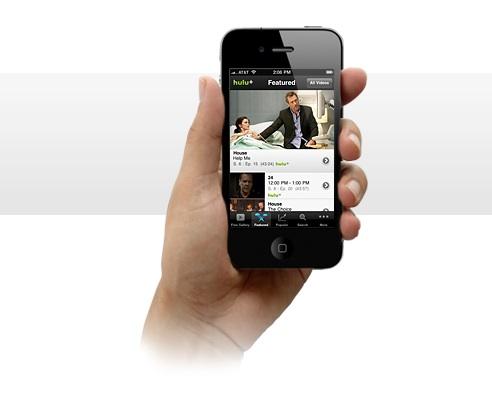
Clearly, TV is the next killer app - for mobile and the living room. Right?
I spent the day yesterday at Adobe's offices in San Francisco listening, learning, and talking about what's going on with respect to Android, Flash, and other facets of the software maker's growing relationship - allegiance, really - with Google. Adobe is pretty excited about Android-related opportunities for Flash and its suite of related tools and frameworks, including the forthcoming release of AIR for smartphones. AIR could make it much easier for Flash developers to deploy their games, animations, and apps to the Android Market as well as to desktop-class browsers. That'd be a great thing for developers, consumers, and the Android app scene in general - so long as it works. AIR seems to have gotten better over the past six months or so, but I've long heard complaints about AIR apps for Macs and PCs causing memory leaks and other system slowdown problems. To their credit, Adobe owned up to this point when I asked about it yesterday and said that AIR as a whole works much, much better than it did even just a few months back.
But that's a bit off topic for now. For now the thing is that Adobe - and Google along with Logitech (and Sony and other OEM partners) - seem pretty geeked out on Internet-powered TV. As do a whole host of other players, only the surface of which I tried to scratch with that bullet list that led off this article. There's no doubt that the ways in which we consume video, and the places from which that video content comes, are changing. While it's hard for me to see big studios and big-time live event networks (ESPN, for example) fading out of the picture entirely, I can easily imagine the world that certain PR/Marketing folks want me to imagine - one where big studio/network content sits side-by-side with what we now think of as "Web video," including user generated content and short-form clips from smaller studios who've never broadcast via public airwaves or cable, but have found success online.
Such a world could threaten to turn cable TV operators and home/mobile Internet Service Providers alike into "dumb pipes" whose only real role is to provide consumers with fast, plentiful bandwidth. Consumers would then decide what, if any, "TV" content they want to watch and subscribe to via free Websites like YouTube and paid services ranging from iTunes to Hulu Plus and beyond. The cable/ISP outlets of course don't want this, so expect to see attempts made at hybrid models along the lines of HBO GO, which will offer mobile content free to anyone who already subscribes to the company's pay cable channels. How, exactly, HBO plans to authenticate mobile users against their pay cable accounts remains to be seen, though it does make me weary of a partnership-ruled world in which the only way I can get HBO and ESPN in my living room and on my mobile device would be to subscribe to two different pay cable TV services along with my home and wireless ISPs. I don't think it'll come to that, but we all know how American business likes our "free market" inspired competitive messes (Blu Ray vs HD-DVD, anyone? VHS vs Beta? iTunes vs The World?).
Which brings me back to the question of TV for mobile. Not very long ago at all I hated "mobile TV." It was slow, stuttery, prone to timing out, and offered up a small menu of often out-of-date, second-run content that was barely watchable thanks to compressed, blocky video and AM radio quality sound. Those days aren't quite long gone, but they're fading away. Part of that has to do with the way we "watch TV" at home, using DVRs and place shifters and Web-based servers to download and stream content to our HDTVs alongside of traditionally broadcast media. While FLO TV and carrier-based mobile TV offerings still use a variety of digital broadcast protocols for some content, the success of iTunes and Hulu as well as Slingbox and carrier-based placeshifters like AT&T's Uverse app for iPhone speak to the flexibility and quality offered by the record to disk/compress for mobile/sling across the Web way of doing things.
So while Google is amped up about bringing YouTube, Web-based Flash games, and broadcast-plus-interactivity to your living room and mobile devices via the forthcoming herd of Google TV products, Apple and Hulu have their sights set on full-on end arounds that relegate the likes of AT&T, Comcast and Time Warner to full "dumb pipe" status by licensing, selling, and serving TV shows direct to their consumers. Either way, the mobile screen has a big part to play in TV's future.
Whether it's a live sporting event on your living room screen supplemented by stats and chat rooms on your handheld Android device, or the latest episode of Mad Men shot direct to your iPad while you kill time during an airport layover, TV is and will continue to be America's favorite way to kill time. And it's poised to become mobile's next Killer App, as well. Exactly where the carriers, device makers, software companies, and accessory makers wind up in the TV value chain remains to be seen, but prepare yourself another wave of "4G plus Mobile TV" meets "Timeshifting, Placeshifting, Life Changing" marketing hype as we draw closer to the Winter Holiday Season (TM).